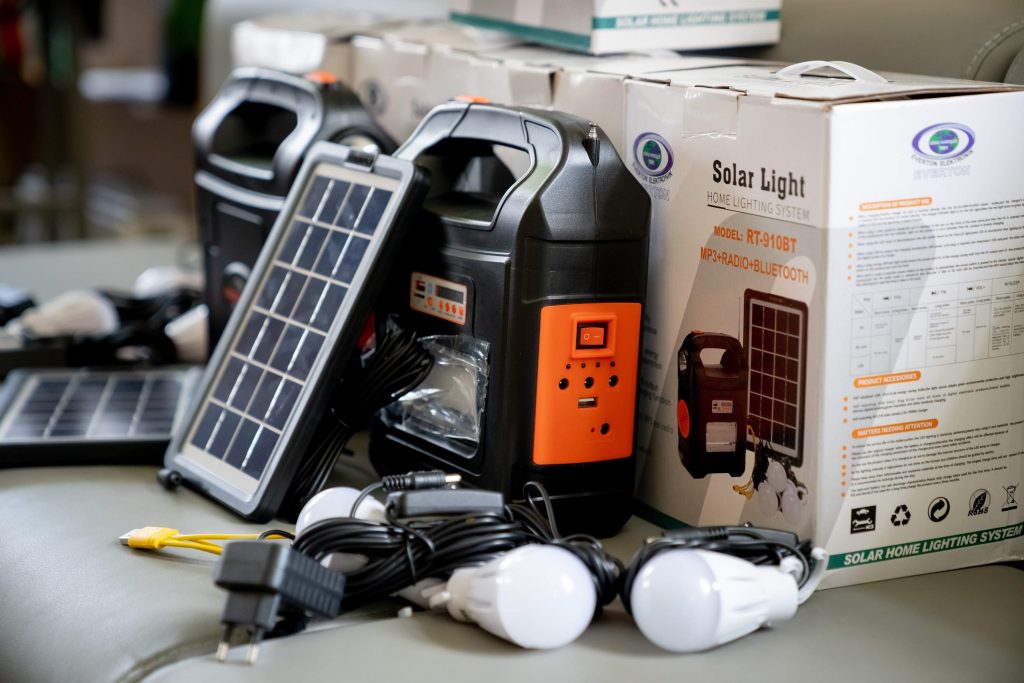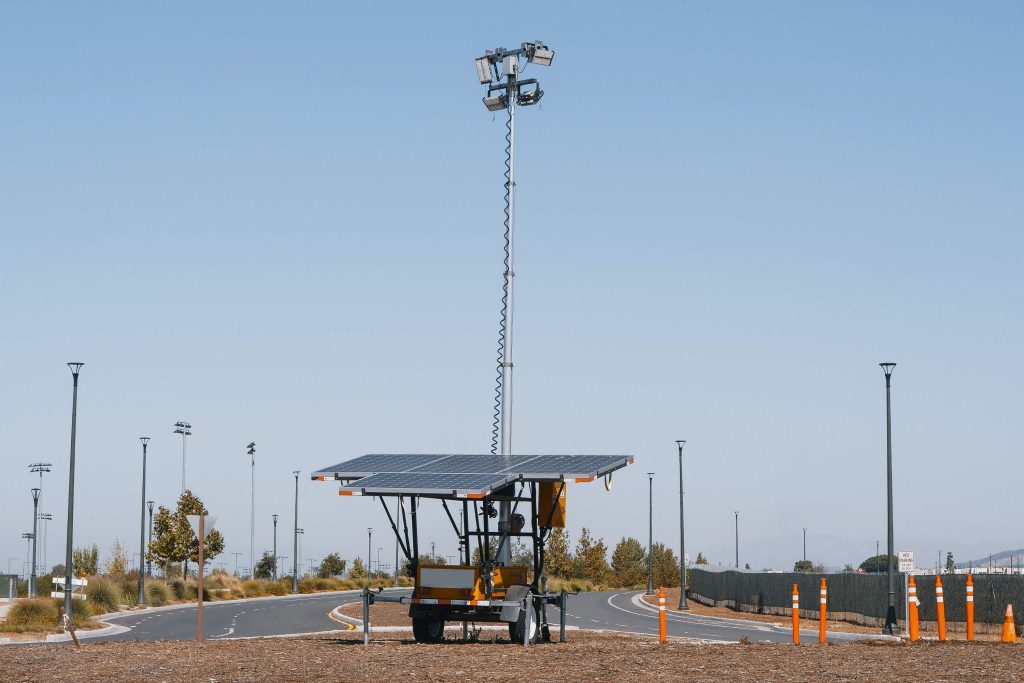Shedding Light on LEDs: A Modern Lighting Solution
LED lights, or light-emitting diodes, have swiftly become an omnipresent element of our everyday lives. This revolutionary technology is found everywhere, from tiny indicators on our electronic devices to grand illuminations in stadiums and public spaces.
LEDs are semiconductor devices that emit visible light when an electrical current is passed through them. They differ significantly from traditional lighting solutions such as incandescent or fluorescent bulbs, primarily due to their superior energy efficiency and long lifespan.
LEDs bring forth a multitude of advantages for users. Foremost among these is energy efficiency; they use approximately 75% less energy than incandescent lighting, leading to substantial cost savings over time.
They also have a remarkable lifespan, often functioning for tens of thousands of hours before needing replacement. Additionally, unlike conventional light bulbs, which can shatter and pose safety hazards, LED lights are robust and compact.
Furthermore, LED lights display exceptional versatility in applications beyond general lighting. Due to their small size and the ability to be controlled individually, they are integral components in diverse fields such as digital microscopes, telecommunication through Li-Fi (light fidelity), remote controls using IR (infrared) LEDs, traffic signals, and even space research.
Despite these impressive attributes, however, there remains a common misconception that LEDs require complex power arrangements for operation, specifically AC (alternating current). In reality, though, LEDs operate optimally on low-voltage DC (direct current) power sources – a characteristic that makes them ideally suited for battery operation.
Unraveling the Potential of 12V Batteries: The Power Behind Portable Devices
A battery is essentially a storehouse of electro-chemical energy, which is converted into electrical energy upon connection with an external circuit. The 12V battery is a commonly used type – the ’12V’ referring directly to its output voltage.
When you consider all the devices and appliances that operate at 12 volts, it’s clear just how widespread this battery type is in our daily lives. 12V batteries are most commonly associated with automobiles. The quintessential car battery provides the necessary power to start the engine, power vehicle accessories when the engine is off, and recharge after starting or prolonged accessory use. However, their use extends beyond vehicles alone.
Battery technology has evolved significantly over time to offer more compact sizes with greater energy density – characteristics highly desirable for portable gadgets and devices. Thus, 12-volt batteries have found applications in areas like emergency lighting systems, portable gadgets, alarm systems, solar applications, and recreational vehicles (RVs).
A unique advantage of these batteries is their ability to provide a substantial amount of current – an attribute that makes them well-suited for ‘power-hungry’ applications like motor-driven toys or audio equipment. Moreover, due to their wide availability and standardized voltage output, they’re often used as dependable temporary power sources during power outages.
Despite these various uses, however, a question that often arises amongst users is whether a device such as an LED light, which typically operates on low-voltage DC, can be powered by a 12V battery. In fact, the compatibility of these two technologies not only exists but also offers intriguing possibilities – a topic we will delve into further in this post.
Understanding the Basics: The Science behind LED Lights
In order to comprehend how LED lights can function with a 12V battery, it is fundamental to delve into the science behind these brilliant illuminators. Light-emitting diodes, or LEDs, as they are commonly known, are semiconductors that emit light when an electric current passes through them. This process is known as electroluminescence.
The core of an LED is composed of a chip embedded in a reflector cup, residing on an epoxy resin lead frame. The chip has two regions separated by a junction; these regions are doped differently, creating p-type and n-type semiconductors.
When voltage is applied, electrons from the n-type material begin to move towards the p-type, eventually recombining at the junction. It’s this movement and subsequent recombination that releases energy in the form of light photons – creating illumination.

LEDs operate on direct current (DC), which flows in one direction; this requires that polarity be observed when powering LEDs, with one lead being positive (anode) and another negative (cathode). In most cases, the longer lead is positive.
This technological advancement offers various advantages over traditional incandescent bulbs, including significantly reduced heat emission and increased durability due to a lack of filament. Most importantly, however, LEDs have drastically improved energy efficiency, making it possible for them to work effectively with low-power sources such as a 12V battery.
The principle reason why LEDs are more energy-efficient than their traditional counterparts lies in their design and operation mechanism. Instead of generating light through heat generation like incandescent bulbs, which waste considerable amounts of energy due to dissipation as heat, LEDs emit light through electroluminescence, a far more efficient process. By using electrical energy more effectively, LEDs are able to produce the same amount of light as incandescent bulbs but use less power, making them an ideal choice for battery-powered applications.
The Mechanics of a 12V Battery: Powering Up
Now that we have illuminated our understanding about LED lights, let’s shift our focus to the second component of our discussion: the 12V battery. A 12-volt battery is a common power source designed to store and release electrical energy. It consists of six cells in series, each producing approximately 2 volts; collectively they add up to generate around 12 volts.
The science behind how a 12V battery stores and releases energy is quite fascinating. Each cell within the battery contains an electrochemical reaction between lead and sulfuric acid, creating lead sulfate and electrons.
When the circuit connected to the battery is open (i.e., not in use), this reaction gradually continues until all available lead has been converted into lead sulfate – this is when your battery is fully charged. When you then connect a load, such as an LED light, to the battery, it uses these stored electrons, converting them back into electrical energy, which provides power.
Apart from their widespread use in automobiles due to their consistent performance even under heavy load conditions like starting an engine or running car accessories while idle, smaller versions of these batteries are also extensively used in other devices such as golf carts, scooters, or backup power supplies for computers due to their lasting durability and reliability. An important characteristic that makes a 12V battery compatible with many devices, including LED lights, lies in its ability to deliver steady voltage over a significant period of time before it needs recharging.
It holds sufficient capacity that can comfortably sustain low-power-consuming devices for extended durations. It’s the effective combination of an LED’s low power requirement and a 12V battery’s ability to provide consistent power over prolonged periods that makes running LED lights from a 12V battery not only possible but also highly practical.
Can We Run LED Lights from a 12V Battery?
LED lights can indeed be run from a 12V battery, heralding an efficient alternative to the traditional electric power source. Their compatibility is primarily due to the nature of LED lights, which use diodes that allow current to flow in one direction – from the anode (positive side) to the cathode (negative side). This single-direction flow perfectly aligns with a 12V battery’s direct current output, making it feasible to use this type of battery as a power source.

The factors enabling this possibility include their low voltage requirement and energy efficiency. LED lights typically operate on low voltage, often within the range of 12V-24V. This makes them ideal for pairing with a 12V battery whose output matches their operational needs precisely. Beyond mere compatibility, using a 12V battery for LED lights has several benefits.
One being portability – you can bring your lighting setup anywhere without being tied down by proximity to electrical outlets. Secondly, it’s cost-effective; charging a battery is usually cheaper than continually utilizing mains electricity.
Detailed Guide on Running LED Lights from a 12V Battery
Before embarking on this project, ensure you have essential tools such as wire cutters/strippers, electrical tape or heat shrink tubing, and soldering iron if you prefer soldered connections over splicing. Connecting your LED lights to the battery begins by identifying the positive and negative terminals of both parties involved. Once identified, connect each terminal’s corresponding ends using your wires – positive to positive and negative to negative.
Remember safety comes first during this operation; ensure all connections are well-insulated with electrical tape or heat-shrink tubing after joining them together. It prevents potential short-circuiting, which could lead to battery damage or cause a fire.
Potential Challenges and Solutions in Running LEDs from a Battery
Running LED lights from a 12V battery isn’t without its challenges. The most common is voltage drop due to resistance in the wiring, affecting the LED light’s brightness. Power inefficiency can also arise if the battery cannot provide enough current to handle all connected LEDs.
To overcome these hurdles, using thicker wires for connections can reduce resistance and voltage drop. Additionally, calculating your LED light strip’s total power consumption (in watts) ensures you choose a battery powerful enough to support it efficiently.
Advanced Topics: Towards More Efficient Use of 12V Batteries with LEDs
For those seeking more advanced control over their lighting setup, resistors or regulators may be employed for managing voltage variations. A resistor will limit current flow while a regulator maintains consistent voltage levels regardless of changes in load conditions.
Alternatively, solar-powered batteries can present an eco-friendly solution for powering LEDs. This sustainable method harnesses renewable energy while reducing dependency on grid electricity.
Case Studies: Practical Applications of Battery-Powered LEDs
Real-life examples abound where LED lights are run by a battery – camping trips and caravans make frequent use of this arrangement due to its portability and independence from grid power sources. Lessons learned from these case studies underscore the importance of proper planning, knowing your power requirements, and preparing for contingencies like spare batteries or charging options.
Conclusion: Can We Run LED Lights from a 12V Battery?
Efficiently Powering LED Lights with a 12V Battery
In essence, running LED lights from a 12V battery is not just feasible but also heralds significant benefits in terms of cost-efficiency, portability, and energy conservation. By acknowledging potential challenges and preparing adequately, we can effectively harness this setup for various applications. As technology continues to advance, we anticipate even more exciting possibilities in this realm – perhaps brighter, longer-lasting LED lights or more efficient battery designs.
You may also be interested in the following posts:
